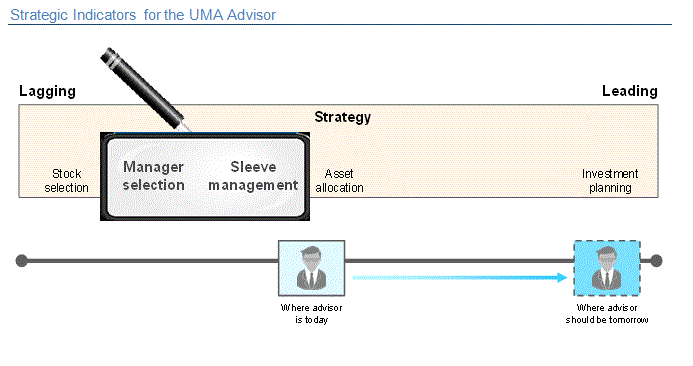Next-Generation UMA: Breaking Tradeoffs Between Customization and Scale
Abstract
For years, the Unified Managed Household account (UMH) has been the Holy Grail of the wealth management business, despite the technological and legacy issues that have made its realization a quixotic task. Celent believes sponsors and vendors must stop tilting at the UMH windmill and focus instead on realizing the more immediate promise of Unified Managed Account (UMA), where functionality has the potential to deliver in the short term.

In the report Next-Generation UMA: Breaking Tradeoffs Between Customization and Scale, Celent looks at how sponsors and technology vendors can help the UMA transcend its historic product orientation to become the platform of choice for clients and advisors alike. The report also suggests ways advisors can extend their reach beyond firm walls and across continuums of liquidity to advise on the whole of client assets, and how they can monetize that advice.
The emergence of the UMA as a core solution for high net worth investors over the last two decades has been supported by secular changes that have reshaped the wealth management business, including a shift in industry focus from benchmark-based performance to the realization of goals or outcomes.
The strategic requirements implicit in such a goals-based approach pose challenges to the advisor, whose writ now extends beyond asset allocation to investment planning. To avoid redundancy, the advisor must acknowledge the central role of technology and subordinate day-to-day tasks for the delivery of strategic advice. The challenge is that the evolution of the advisor from stock picker to strategist, bound up in the automation of the wealth management enterprise platform, is barely at the halfway mark.

If the advisor is one weak link, then data connectivity is another. The disjointed nature of wealth management connectivity, visible in the thicket of feeds that exist between UMA sponsors, asset managers, and custodians, represents the legacy of the organizational silos and systems spaghetti that have historically defined the industry. It underscores the degree to which fragmentation and competitive pressures continue to hamstring wealth management today.
Sponsors and vendors have been grappling with these institutionalized roadblocks for some time. Accelerating margin compression now has made it crunch time for both advisors and sponsors, as well as those vendors whose product orientation leaves little room for the type of client-centricity inherent to a digital world.
“In the race for client assets, the winners will be those firms that abandon the top down, product-oriented approach in favor of scalable and highly automated systems with personalization and outcome-oriented advice at the core,” says William Trout, a senior analyst with Celent’s Wealth Management practice and author of the report.

